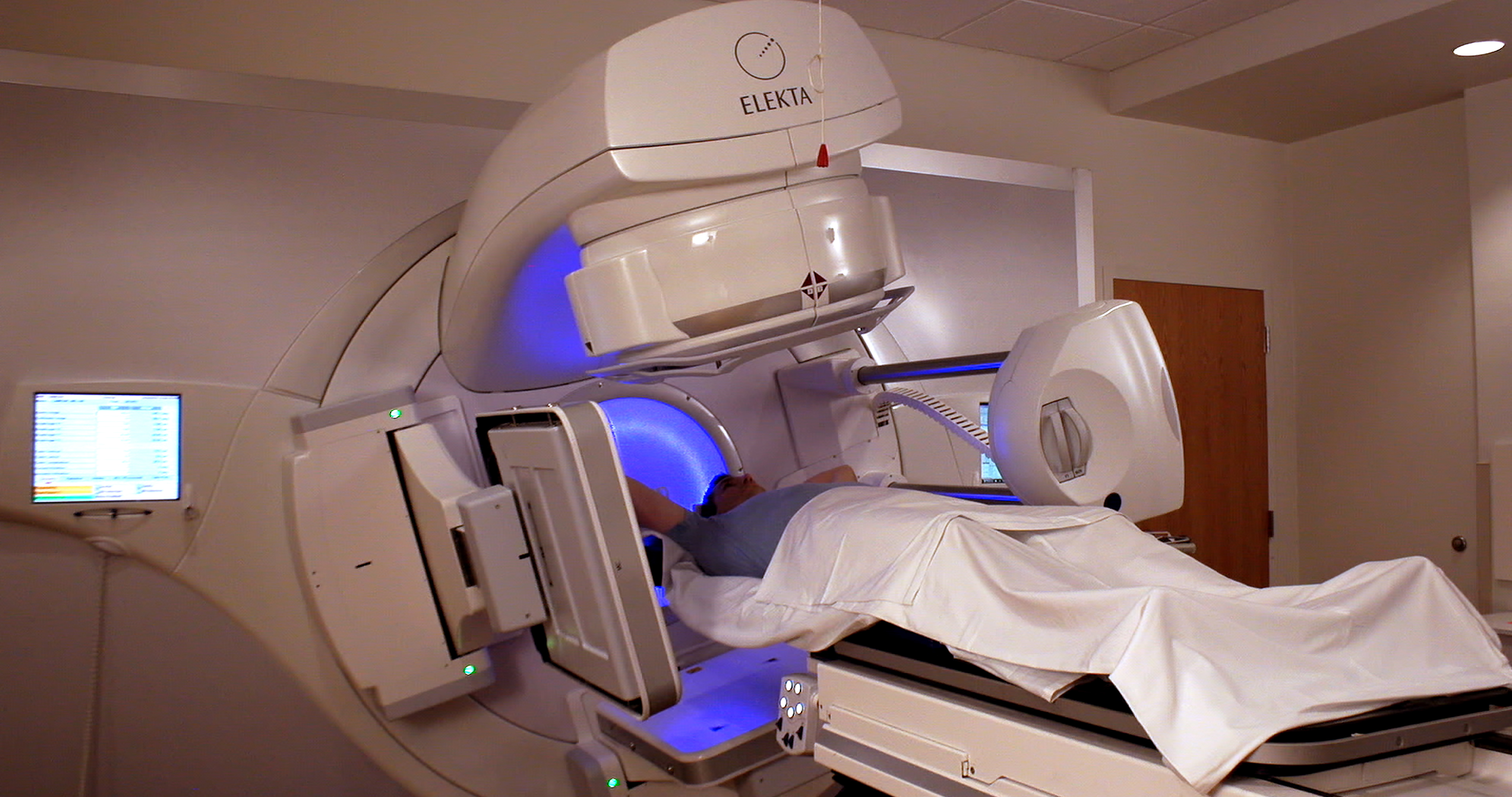Targeting Pancreatic Cancer with Radiotherapy

By K.E. Hitchcock, MD PhD for the UF Hope and Healing Blog
Survival rates in cancer worldwide have been improving for the last 40 years, but some types, like pancreatic cancer, lag stubbornly behind. More than 56,000 people in the United States will be diagnosed with pancreatic cancer this year (footnote 1), and scientists and doctors are looking to the most up-to-date technologies available to try to change their statistics.
Scientific studies over many years have looked at improving rates of successful surgical removal of cancers of the pancreas. One approach is to use radiation and chemotherapy before the operation to shrink the tumor and “clean up” stray cancer cells that have moved into the normal tissue around the main tumor mass (footnote 2). This is called neoadjuvant therapy, and is especially important when the tumor can’t be removed at the time of discovery because it is too entwined with vital parts of the body (footnote 3). Sometimes surgery cannot be done at all, and in that case radiation and chemotherapy become the main treatments.
Recent developments in radiation oncology have made radiotherapy for pancreatic cancer more effective and easier on the body. An improved technique called image-guided radiotherapy uses a low-dose CT scan at the time of each daily treatment to verify that the computer model of the patient’s body is perfectly aligned to her position. This ensures that the radiation beams will be delivered accurately, protecting the normal tissues from unnecessary damage. It’s especially important in the case of internal organs like the pancreas that can move quite a bit from day to day.
Radiation oncologists are using a newer technique called stereotactic body radiotherapy (SBRT) to treat some pancreatic cancers in just a few days rather than over the 5-6 weeks that traditional treatment requires. Because it is new, this approach does not have as much data to support it as long-term treatment, and not all patients are eligible, but early results have been promising and your radiation oncologist should be willing to at least discuss it with you (footnote 4).

Another newer technique in pancreatic cancer treatment is proton radiotherapy. Although proton treatment has been used since the 1960s to cure cancer, only in recent years has this option become widely available. Proton therapy produces the same cure rates as traditional photon radiotherapy, but can sometimes deliver less radiation dose to the surrounding normal organs (footnote 5). This may mean a lower risk of side effects. Because we are still investigating the use of proton therapy in pancreatic cancer, insurance companies handle this type of treatment differently and it’s important to be in close communication with your agent if you seek this type of care.
If you are faced with a pancreatic cancer diagnosis, keep in mind that every cancer in every patient is different. Please hear what your doctors have to say when recommending the best approach for your specific situation. Because pancreatic cancer is not a common disease like breast cancer or prostate cancer, you are encouraged to seek treatment at a large university hospital or other research-based practice where the most recent developments in cancer testing and therapy are incorporated into everyday treatment.
Good cancer care need not be an unbearable burden to your family. You should feel comfortable asking up front about treatment costs and choosing among capable facilities based on their affordability. You are not alone in your journey through cancer. The UF team is here and ready to help.
1. American Cancer Society. Cancer Facts & Figures 2019. Atlanta: American Cancer Society; 2019. 2. Paniccia A, Hosokawa P, Henderson W, et al. Characteristics of 10-year survivors of pancreatic ductal adenocarcinoma. JAMA Surgery 2015;150:701-710. 3. Versteijne E, Vogel JA, Besselink MG, Busch ORC, Wilmink JW, Daams JG, van Eijck CHJ, Groot Koerkamp B, Rasch CRN, Van Tienhoven G. Meta‐analysis comparing upfront surgery with neoadjuvant treatment in patients with resectable or borderline resectable pancreatic cancer. British Journal of Surgery 2018, 105(8): 946-58. 4. Petrelli F, Comito T, Ghidini A, Torri V, Scorsetti M, Barni S. Stereotactic Body Radiation Therapy for Locally Advanced Pancreatic Cancer: A Systematic Review and Pooled Analysis of 19 Trials. IJROBP 2017 97(2): 313-22. 5. Verma V, Lin S, Simone CB, Mehta MP. Clinical outcomes ant toxicities of proton radiotherapy for gastrointestinal neoplasms: a systemic review. J Gastro Oncol 2016, 7(4): 644